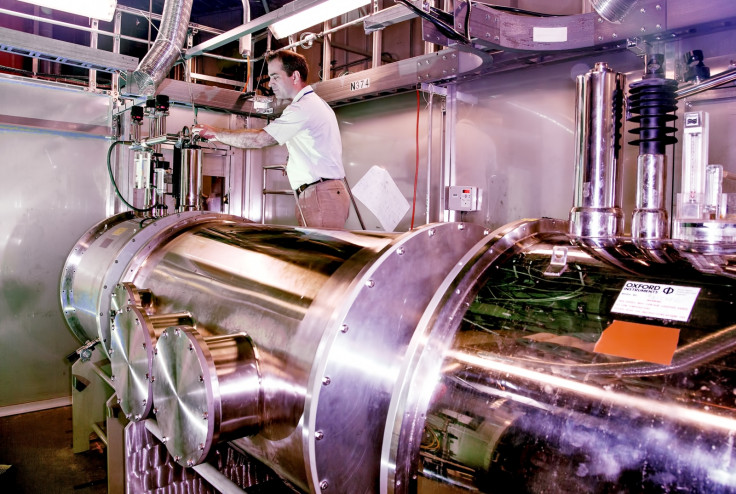Neutrino study: High precision hunt for Big Bang particles begins

High precision research is hoping to establish that most of the billions of neutrinos whizzing through space have their origin in the Big Bang.
Researchers led by Princeton University physicist Chris Tully will work at Tully's prototype lab at the US Department of Energy's Princeton Plasma Physics Laboratory (PPPL) to capture neutrinos using tritium, a radioactive isotope of hydrogen.
The resulting tiny boost of energy to the electrons emitted in tritium decay is what the lab will measure.
By precise measurements, the group plans to test long-held assumptions about the density of Big Bang neutrinos throughout the universe. That could either validate the standard model of the origin of the universe or call for a rethink on the Big Bang.
Finding the neutrinos could also show if they could be a source of the invisible dark matter that is believed to make up 20% of the total mass of the universe.
Spotting these neutrinos is akin to "detecting a faint heartbeat in a sports arena filled to the brim" said Charles Gentile, who heads engineering for the project, dubbed PTOLEMY for 'Princeton Tritium Observatory for Light, Early Universe Massive Neutrino Yield.'
"We believe that we live in a sea of 14 billion-year-old neutrinos all around us. But is it true?" says Tully who is sure the experiment will churn interesting observations.
The ancient neutrinos have a wavelength that has been stretched and cooled as the space-time expanded over the 13.7 billion years. Cooled to temperatures that are billions of times colder, and therefore less energetic than those of neutrinos originating from the sun, their capture by tritium creates a very small change in the energy peak of an electron from tritium decay.
The peak again could vary depending upon neutrino pairing with an anti-neutrino or if they decay over billions of years into unknown lighter particles. Much remains a mystery about these elusive, massless particles.
The experiment will bind electrons from the tritium decay to magnetic field lines of superconducting magnets and pass them through filters in the vacuum chamber that will allow only the highest-energy electrons to pass to the calorimeter for measurement.
Precise measurements of electron's energy call for cold, dark conditions where there is minimum external interference.
By depositing the tritium on the nanomaterial graphene, a layer of carbon just one atom thick, the team plans to ensure that the electrons come off cleanly into the vacuum.
The calorimeter will be maintained at a temperature 20 times colder than deep space and less than one-tenth of a degree above absolute zero. This will keep it poised between a superconducting state and a non-superconducting state.
ESA's Planck satellite data has picked up neutrinos released a second after the Big Bang using their interactions with the relic background microwave radiation.
© Copyright IBTimes 2025. All rights reserved.





















